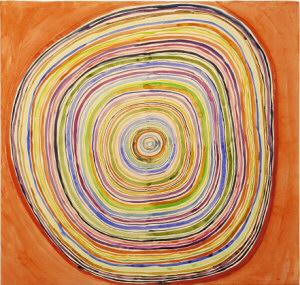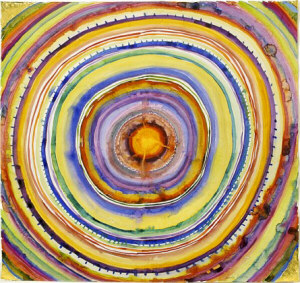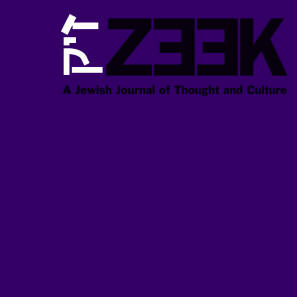 March 06
March 06
The Piyyut is Jewish Soul Music
Basmat Hazan Arnoff
Reveal Yourself my Dearest, And spread over me Your canopy of peace. Let the earth shine with Your glory, Let us rejoice in You. Make haste, my Love, for the time has come; Show me Your favor as in the days of old.(Excerpted from the traditional Shabbat liturgical prayer Yedid Nephesh by Eliezer Azikri, 16th-17th century)
My father is a professor of piyyut, Jewish liturgical poetry. For years my family and I joked with him that no more than maybe three and a half people had ever read any of his books. We liked to needle him that while all of his buddies in the academy got invited to all kinds of public events and lectures and were interviewed by the media, he had chosen such a bizarre field of study that no one would ask him to speak anywhere, except for, maybe, the ones that had absolutely no choice. Even us kids never made it very far past the dedications on the first page.

At an event three months ago celebrating the launch of the new website Invitation to Piyyut I understood that something had dramatically changed in how the Jewish community, at least in Israel, relates to this complex, beautiful and little-understood art form. The reception hall was filled wall to wall with a wildly diverse crowd – and everyone there was interested in piyyut. Women and men, Ashkenazi and Mizrachi, religious and secular, young and old, and all were there seeking out Israel's newest "retro" trend – piyyut. Indeed, in the past five years the piyyut has become more and more prevalent on the Israeli cultural scene. Well-known performers like Eti Ankri and Ehud Banai and Barry Sahkarov are recording and playing piyyutim. There are "Piyyut Shabbats" held by a variety of communities in hotels across the country for people to celebrate and sing for the entire weekend. People from all walks of life are meeting weekly in "Singing Communities" – Kehillot Sharot – to learn to sing piyyutim together. And, in addition to the a vast collection of piyyutim accompanied by interpretation, academic research, and a wide variety of recorded renditions of traditional piyyutim on the "Invitation to Piyyut" website, the Israeli Department of Education has published a textbook for teaching piyyut in middle schools across the country. It seems my father was a trendsetter.
The piyyut makes the stations of prayer beautiful in every place that the heart rises above the intellect in the Jewish lifecycle and calendar – where words without music are not enough, where ordered and regular prayer is open to be renewed.
- Avigdor Shinan
What is the piyyut?. The term is derived from the Greek word "poietes" meaning "creator." Using this definition the classical midrashic collection Leviticus Rabba honored 3rd century sages Rabbi Eleazar and Rabbi Shimon by calling them "poietes" – "creators." During the period of Late Antiquity and onward, as the much of Jewish poetic writing became related in some way to synagogue worship, the term piyyut came to mean a Jewish liturgical poem specifically. With the revival of Hebrew as a spoken language in the 19th century, the definition of piyyut received a more general meaning, namely any type of written expression in high, classical language. Sometimes the word piyyut even described any expression that was particularly moving or artistically profound. Contemporary proponents of piyyut tend to define it as liturgical poetry that is actually sung. Thus the word "paytan" – or one who "creates" a piyyut – refers both to the writer and/or composer of a piyyut as well as the actual singing performer of a piyyut.
"Piyyut is a chain of tradition of Jewish culture on every level. It is the melody of the heart and the longing for all of the good that lies within the Jewish world and its many communities," says Ephraim Hazan. In the words of Dr. Edwin Seroussi, Professor of Musicology and Director of the Jewish Music Research Center of the Hebrew University of Jerusalem, "performance of piyyutim has lasted until today because it has always has a wide range of social purposes beyond the religious meanings of its texts. It symbolizes a direct connection between the past and the present, bridging between different geographical locations, embodying the historical continuity of the use of Hebrew language, and linking between past creators and transmitters of piyyut traditions and our own time."
The "Singing Communities" project, and its website, "Invitation to Piyyut," is at the center of the Israeli piyyut revival, so I sat down with some of the key players in the project to learn more about what inspired them, and what relevance this ancient art form has for contemporary Israelis.
The "Singing Communities" project was founded by Yossi Ohana, who believed that piyyutim offered a way for today's generation of Mizrachi Jews to connect to glorious, ancestral traditions that incurred great traumas with the immigration of most Jews of Arab lands to Israel in the 1950s. Ohana, born in Morocco, immigrated to Israel at the age of six, and as an adult had moved far away from his heritage. As one of the founders of "Mizrachi Democratic Coalition," on organization supporting causes of Mizrachi (sometimes called "Oriental" but with the meaning of Jews from Arab countries and Persia) Jews in Israel, Ohana perceived a gap between himself and traditional culture. "Focusing on educational, economic, and social issues without a connection of my heritage left me without a satisfying answer for the questions that were occupying me," he says. In attempting to fill this void he and some of his friends began studying North African Responsa literature – texts recording correspondence on Jewish practice between sages and their communities. Eventually, with the assistance of a brother who had remained traditionally religious, they worked their way towards the world of piyyut.
The seed for the idea of Singing Communities was planted when Ohana was living in Berkeley, California, of all places. In his loneliness for the traditional melodies of home he founded a Sephardic service at the Hillel of UC-Berkeley. He and his friends learned the traditional melodies for the High Holy Days from recordings that his brother sent them from Israel. He was also a founding member of the band Za'atar, a group local musicians playing music that included a number of arrangements of simple piyyutim. When he saw the excitement that these piyyutim generated during performances, he understood that there was something deep about the piyyut that needed to be explored.
Now supported by the Avi Chai Foundation, the Singing Communities project runs programs based on communal signing of piyyutim from the full range of Jewish tradition. The Singing Communities themselves, which exist throughout Israel, meet once a week for two and a half hours per session. Each session is run by a permanent facilitator as well as a guest paytan who works with the group for four sessions. Participants represent all variety of relationships to Jewish tradition and observance, men and women of all ages and backgrounds and classes.
"The goals is that this will be a place for thinking, a place that raises questions for people about identity, not a place that will give answers," say Ohana. In fact, people in the Singing Communities do not talk much. They focus on singing, allowing for a direct connection amongst participants without formal conversation – an emotional bond formed as a function of the melodies and the ancient words and the souls in the room. There is no intellectual discussion about Jewish or Israeli identity, nor about Ashkenazi or Mizrachi identity, but there is something about the encounter within Singing Communities that allows for a very special fusion of personal and collective identities. Words such as "passion," "heart," and "soul" appear time and again in the responses of group members that are asked about their experience.
In the absence of an intellectual one, the melodic dialogue about identity takes place on a number of levels. Amongst the guest paytanim are men who come from the Ultra Orthodox community. When the Singing Communities first began, the issue of kol isha – literally a teaching about "the voice of a woman" which some Orthodox communities interpret to restrict singing by women – was a source of tension. The encounters between the paytanim and the groups have dissolved much of this tension. In meeting the group members guest paytanim have come to understand the importance of full participation of everyone. Even paytanim that once refused to allow women to sing "solo" teach sessions today without any distinction according to gender amongst the singers. They explain that their teaching of mixed groups is part of a unique path for bringing people closer to Jewish tradition. And on the other hand, secular people in the group learn that paytanim in traditional garb represent much more than just their preconceived notions of Ultra Orthodox Jews. When both sides let go of their assumptions about the other, a dynamic and meaningful encounter ensues.
The piyyut combines and refines all key elements of Jewish culture: language, music, mysticism, history, midrash, philosophy, prayer, and personal, family, and national emotions – all in one entity. The piyyut allows the possibility of experiencing all of these elements at once.
- "Invitation to Piyyut" Website
 A core project emerging from Singing Communities is the website "Invitation to Piyyut," a venue for encounter between the general public and the world of piyyut. There are texts and music for hundreds of piyyutim on the website as well as academic articles exploring textual, musical, and cultural elements of the works from a wide variety of Jewish traditions. The director of the "Invitation to Piyyut" website, Yair Harel, a musician in addition to being a facilitator of one of the Singing Communities in Jerusalem, was Yossi Ohana's partner in the establishment of the project almost from the beginning.
A core project emerging from Singing Communities is the website "Invitation to Piyyut," a venue for encounter between the general public and the world of piyyut. There are texts and music for hundreds of piyyutim on the website as well as academic articles exploring textual, musical, and cultural elements of the works from a wide variety of Jewish traditions. The director of the "Invitation to Piyyut" website, Yair Harel, a musician in addition to being a facilitator of one of the Singing Communities in Jerusalem, was Yossi Ohana's partner in the establishment of the project almost from the beginning.
Harel comes from a very different background than Ohana, having grown up in Jerusalem with an American mother and Iraqi father. He was a member of the Bnei Akiva youth movement and his musical education consisted mostly of standard Israeli folk and pop. He was, however, exposed to the world of piyyut on Shabbat during visits to his grandmother who lived in the Yemenite/Iraqi section of the Jerusalem Ultra Orthodox neighborhood Mea Sha'arim. When he started to learn darbukka drumming in private lessons with master Israeli musician Shlomo Bar during his army service, Harel discovered that connection between connection classical compositions, prayer, and soul music spoke to him. Having played and sung in a variety of bands, Harel found that his musical search returned him to piyyutim again and again. He decided to study piyyut formally because of lasting sense that Mizrachi music had at its core "universal aspects that linked emotion, time, and people" in a way that he understood them. "I remember teaching a class on piyyut," Harel says," and I started it with the piyyut 'Yedid Nephesh' in five different versions from five different traditions – India, Persia and so on. And here was this piyyut, composed in Safed hundreds of years ago at a particular time based on a particular circumstance and that had become truly universal while still maintaining the balance between universality and authenticity."
The blockquotes in this article come from the .Invitation to Piyyut website.









